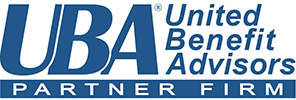 Reports submitted to the U.S. government that include both names and Social Security numbers (SSNs), such as 1095 and W-2 forms, are filtered through U.S. Immigration and Customs Enforcement (ICE), a division of the Department of Homeland Security (DHS). In some cases, employers will receive a No-Match Letter or an Employer Correction Request from the Social Security Administration (SSA) for certain employees. ICE will send a similar letter (the Notice of Suspect Documents) after inspection of files during an I-9 audit when discrepancies are noted.
Reports submitted to the U.S. government that include both names and Social Security numbers (SSNs), such as 1095 and W-2 forms, are filtered through U.S. Immigration and Customs Enforcement (ICE), a division of the Department of Homeland Security (DHS). In some cases, employers will receive a No-Match Letter or an Employer Correction Request from the Social Security Administration (SSA) for certain employees. ICE will send a similar letter (the Notice of Suspect Documents) after inspection of files during an I-9 audit when discrepancies are noted.
A mismatch should not be used to take adverse action against an employee, as it may violate state or federal law. It is, however, incumbent on employers who receive such notices to investigate, remediate, and communicate identified errors within established timelines. ICE’s “safe-harbor” procedures include the process employers should follow to resolve questions of worker identity and eligibility to work. These steps, if followed, can eliminate the possibility that a no-match letter can be used as part of an allegation that an employer had constructive knowledge that unauthorized workers were employed in its workforce.
An employer who knowingly ignores facts and circumstances that would lead a person, through the exercise of reasonable care, to determine worker eligibility may incur penalties of $216 to $2,156 per employee, with additional aggregate fines up to an additional 25 percent.
“Actual” knowledge means that an employer willfully employed a worker knowing that the person was ineligible to work.
“Constructive knowledge” occurs when an employer fails to attempt to resolve no-match situations through inquires, or to take appropriate action within a reasonable time. An employer may also be found liable for constructive knowledge if it ignored indicators that called employment eligibility into question.
The following actions should be taken upon receipt of a no-match letter.
Step 1: Review Records
Employers should check their records to determine if the discrepancy is a clerical error, such as typographical and transcription errors and name changes due to marriage. If this is the case, the employer should:
- Correct its records. All changes to Section 1 of the I-9 form must be completed by the employee, by drawing a line through the incorrect information and writing in the accurate data. If the employee is no longer employed, no correction may be made. An employer can update Section 2 of the I-9. Documents used to verify eligibility to work in the U.S. and identity must meet acceptable requirements of the form in effect when the I-9 was initially completed.
- The employer should verify that the updated information matches government records. A free verification service that confirms names and SSNs is available through the Social Security Administration’s Business Services Online.
- Once verified, the employer should draft a memo that details the manner, date, and time of the verification and attach a signed copy to the employee’s I-9 as well as notify the respective agency of those changes.
ICE’s safe harbor provisions allow the employer 30 days from the receipt of the letter to resolve questions.
Step 2: Require Employees Identified in No-Match Letter to Confirm Information
If the employer is not able to resolve issues identified by the respective agency, it should promptly request that the employee confirm that the employer’s records are correct. A sample employee communication is available at www.ssa.gov/employer/sampleltr.doc.
- If the employer’s records are not correct, it should (in accordance with the agency letter’s instructions) verify the corrected records if new documents are presented, and report the changes to the agency.
- The employer should also correct its records. An employer may use Section 3 of Form I-9, or, if Section 3 has already been used for a previous reverification or update, it may complete a new Form I-9. Minimally, page two of the original I-9 should be maintained in addition to the new I-9.
- If the employee responds that the records are correct, the employee should be instructed to pursue the matter personally with the SSA and notify the employer of any changes.
Once again, the safe harbor provisions allow the employer 30 days from the receipt of the letter to resolve discrepancies.
A discrepancy will be considered resolved only if the employer can subsequently verify with SSA that the SSN and name match or with DHS that documents used to verify eligibility are valid.
Originally published by www.ubabenefits.com

